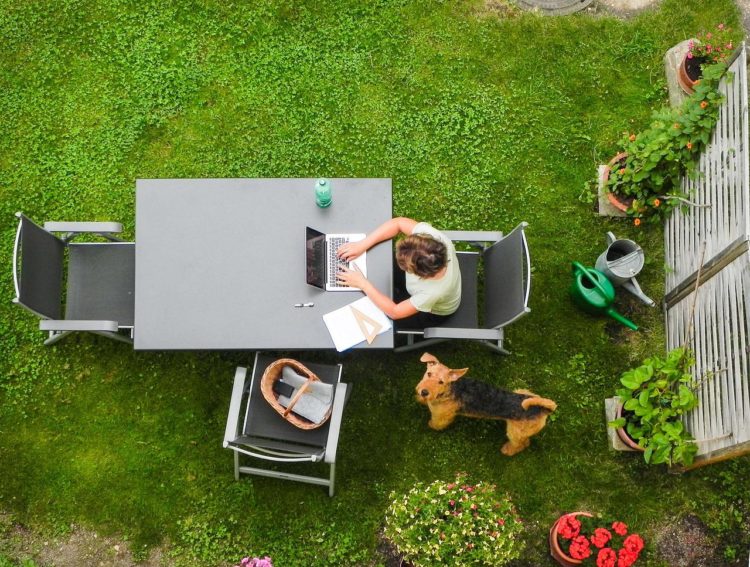Expository writing—the very term sounds dull and boring. But writing non-fiction, expository articles and essays is anything but dull and boring. (Oh how my high school English teacher would be so happy to hear me admit this.) And there’s a market for this kind of writing, far more than for creative short stories!
In this article I explore how to write gardening articles, a specific type of expository writing. The lessons here can be applied to almost any other field of interest.
SHARE YOUR PERSONAL EXPERIENCE
The most important aspect of writing about gardening is to share your unique and personal experience. If you have been successful, your knowledge can act as a guide to others. When you have failed, your firsthand look can also lead to a heartening and meaningful tutorial. We love imperfection. So writers who share their limits as well as their expanses become popular writers!
When you speak from experience, you also have a foundation that warrants attention. People don’t like to be lectured, but they love to hear about stories and adventures. What is your story in gardening? What adventure can you share? Readers will perk up at your personal touch.
ADD A LOCAL ANGLE
Nothing makes an article more readable than to bring it home! When you talk about the rain in Saipan during the month of July 2022, for example, everyone can relate. If you share your experience with the kind of dirt in your yard in Koblerville, people around the island will compare their dirt to yours. If you have noticed certain insects, bees, butterflies, or birds in your yard in Papago, others will start looking into their gardens and trying to see if they have the same. When you ground your gardening articles in local detail, your local audience will relate and be interested.
But just because it’s local, doesn’t mean you can’t have an unusual angle, too. Look at the photo! The different angle makes this unique!
EXPAND YOUR UNIVERSE WITH RESEARCH
Gardening itself is a universal activity. There are farmers in every country of the world. People are growing plants and flowers and food crops from sea level to the highest elevation of human habitation. When you write your articles, besides your personal experience and your local grounding, see what universal aspects apply to your topic. Do research!
And when you research, use reliable data and sources. Don’t believe everything you find on the internet. Check for information from universities, from well-established plant societies, and from government sources. If you use other sources, especially online you-tube videos, vlogs, or blogs, read the comments! Some intelligent people will leave comments that point out errors or misleading information. When you see a lot of that, you know to skip over that source, at least on that subject, and move on. If you find an interesting slant to your topic from your research, be sure to give credit to the source. Your readers will appreciate the connection to the world.
BEGIN ANYWHERE
Begin with the topic or article that is demanding to be written by your subconscious. The one you hear yourself talking to yourself about! Or brainstorm topics and ideas. Or look at your calendar and see what you’re planning on doing soon in the garden.
When you write, don’t get hung up with trying for the perfect lead. Describe something. Or answer a question word on your topic (who, what, when, where, why, how?). Or tell an anecdote about your experience. I’m more writer than gardener, so the writing part is easier for me. If you’re more gardener than writer, you have more to share! There’s more reason we want to hear from you! You may feel overwhelmed because your brain is teeming with information. Just start writing. You can sort out the best train of thoughts later. Or develop several articles from what you write.
ADD PHOTOS
Most gardening publications want photos. If you have a good camera, take photos of your garden that relate to your topic. If you have a camera phone, some of these can be very good. Try for the photos. Always check what’s in the background and try to eliminate distractions or clumsy overlaps (poles sticking out of people’s heads is one I dislike!). You can also find free-to-use photos at various websites like Unsplash.com and Pixabay.com.
If you’re writing for your own blog, be sure to credit the photos if the license requires that and never use someone else’s photo without permission. If you’re submitting to the newspapers or other publications, check with them. They may have their own source of photos. Or they may want yours, too.
For gardening photos, where color is part of the magic of the plant, it helps to have color photos. If you’re article is emphasizing structure, however, you may choose deliberately to use black and white. No matter how much you love your plants, or have a soft spot for a particular photo, choose only the photos that are in sharp focus. Don’t submit an out-of-focus photograph. That may work for impressionistic paintings, like Monet’s Garden, but it doesn’t work for print photography in newspapers and magazine. As a final note, some editors prefer landscape rather than portrait for ease in cropping.
WRAP IT UP!
When you submit your article, realize that the editor has the final word about the title, and can edit for grammar and space considerations. If you submit and your article is rejected, don’t give up! Rejection is part of a writers’ creed. We face it all the time. Know that you’re in good company and look for another publishing venue that might be more suited to your work. Or try another topic. As gardeners, you have a lot to share. Our planet needs more gardeners and more gardening know-how! Here’s to writing about gardening, farming, and related environmental topics. To all the gardening writers and writing gardeners, you are wonderful! With a pretty bow on top!

